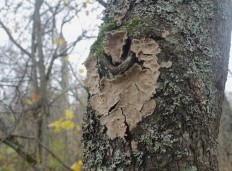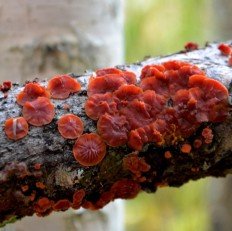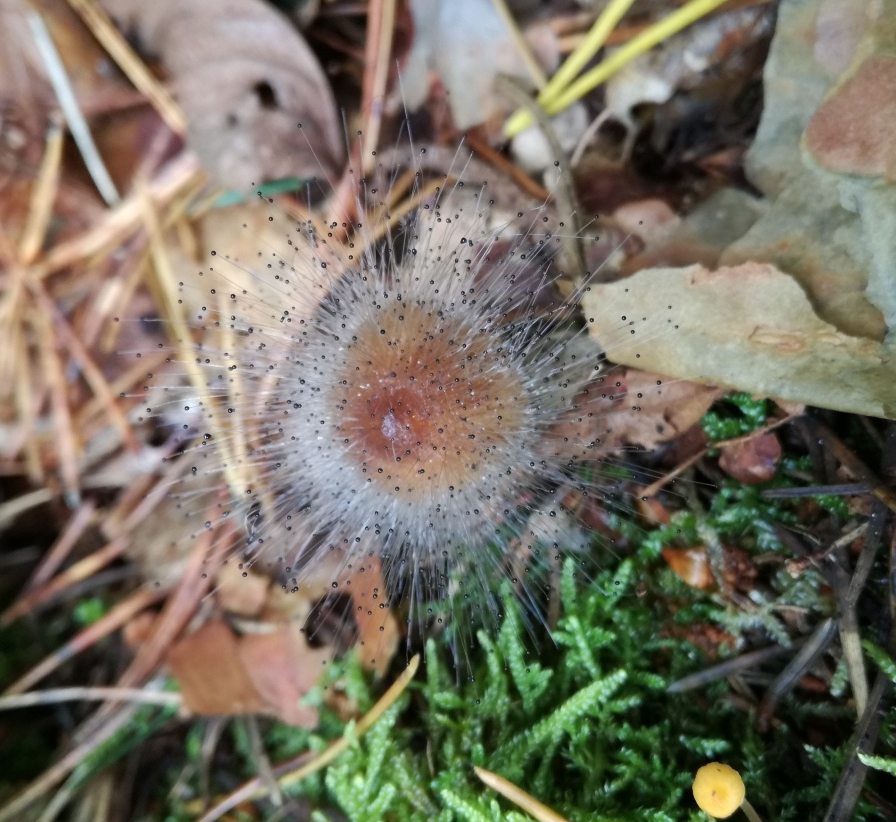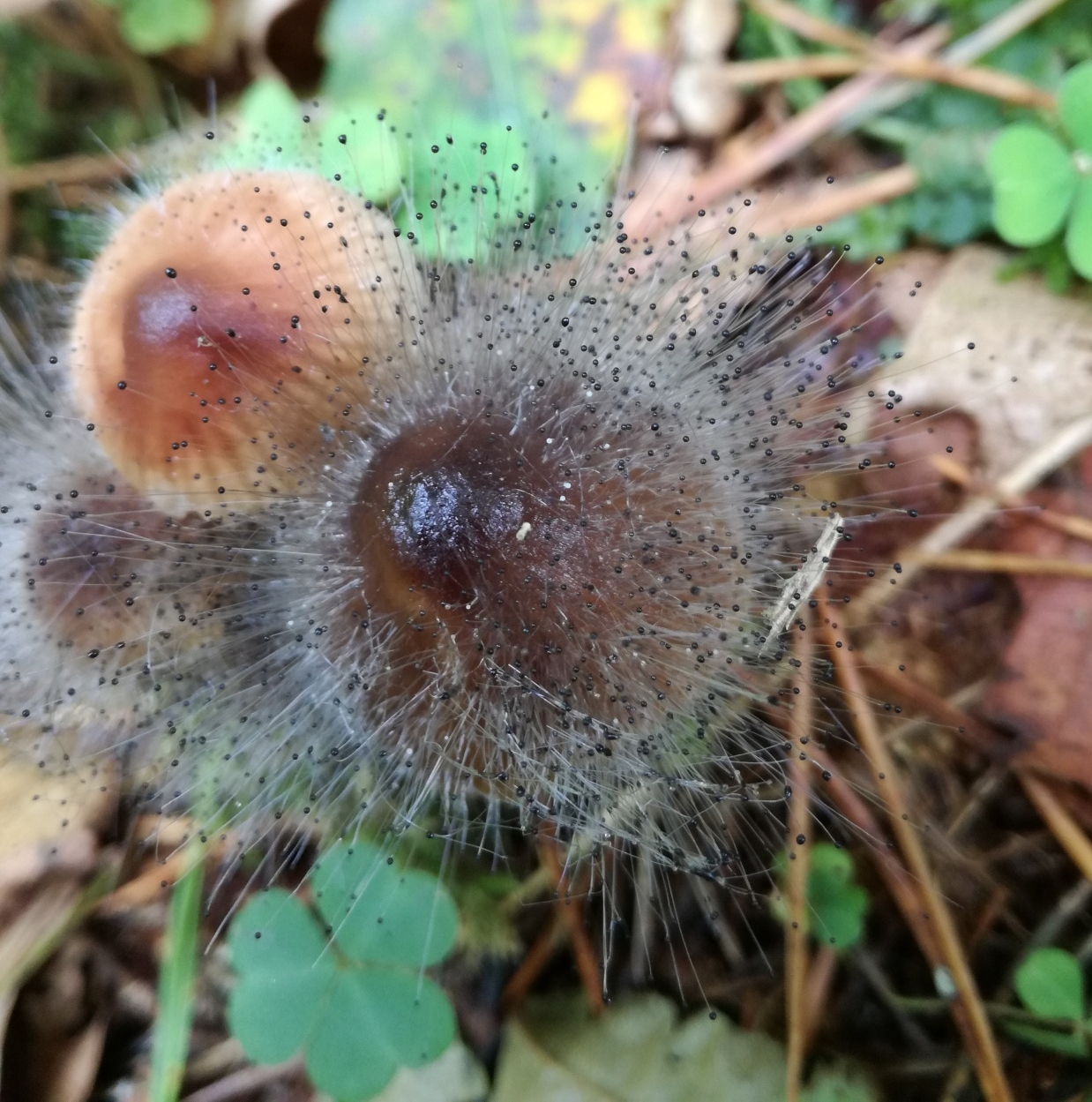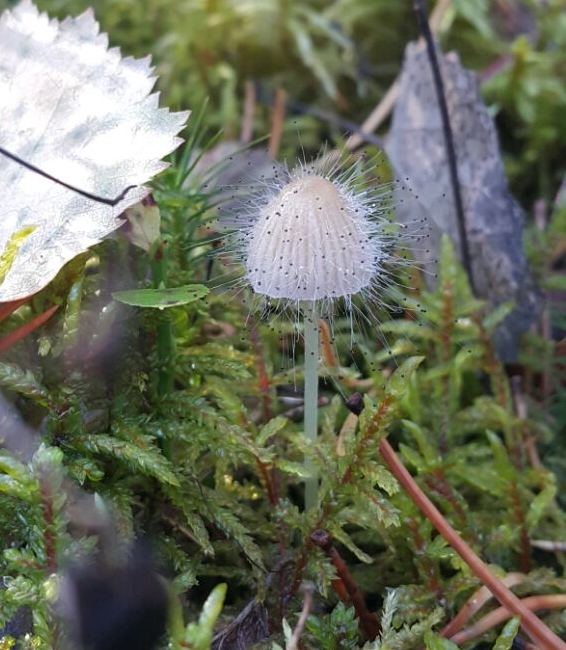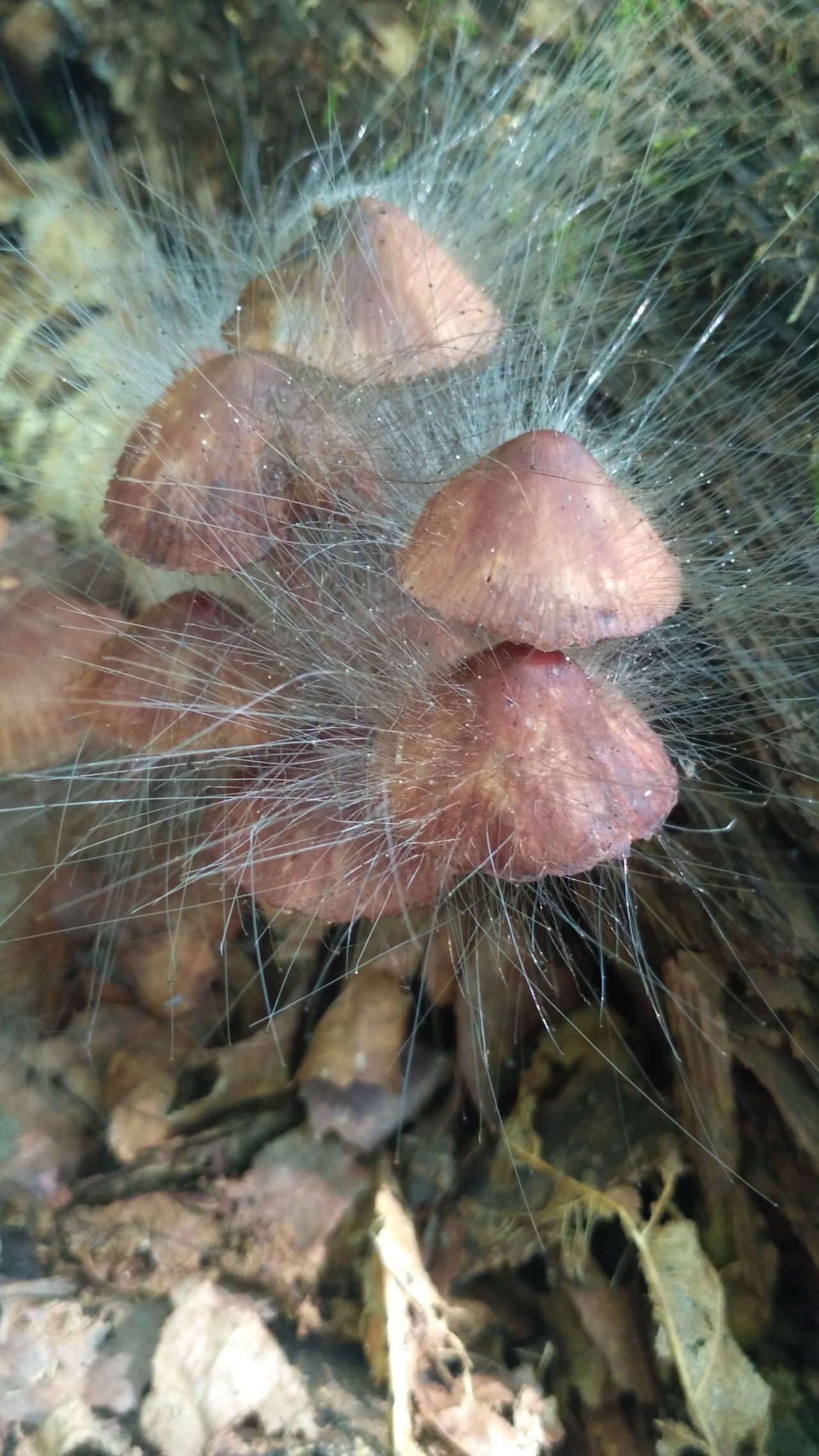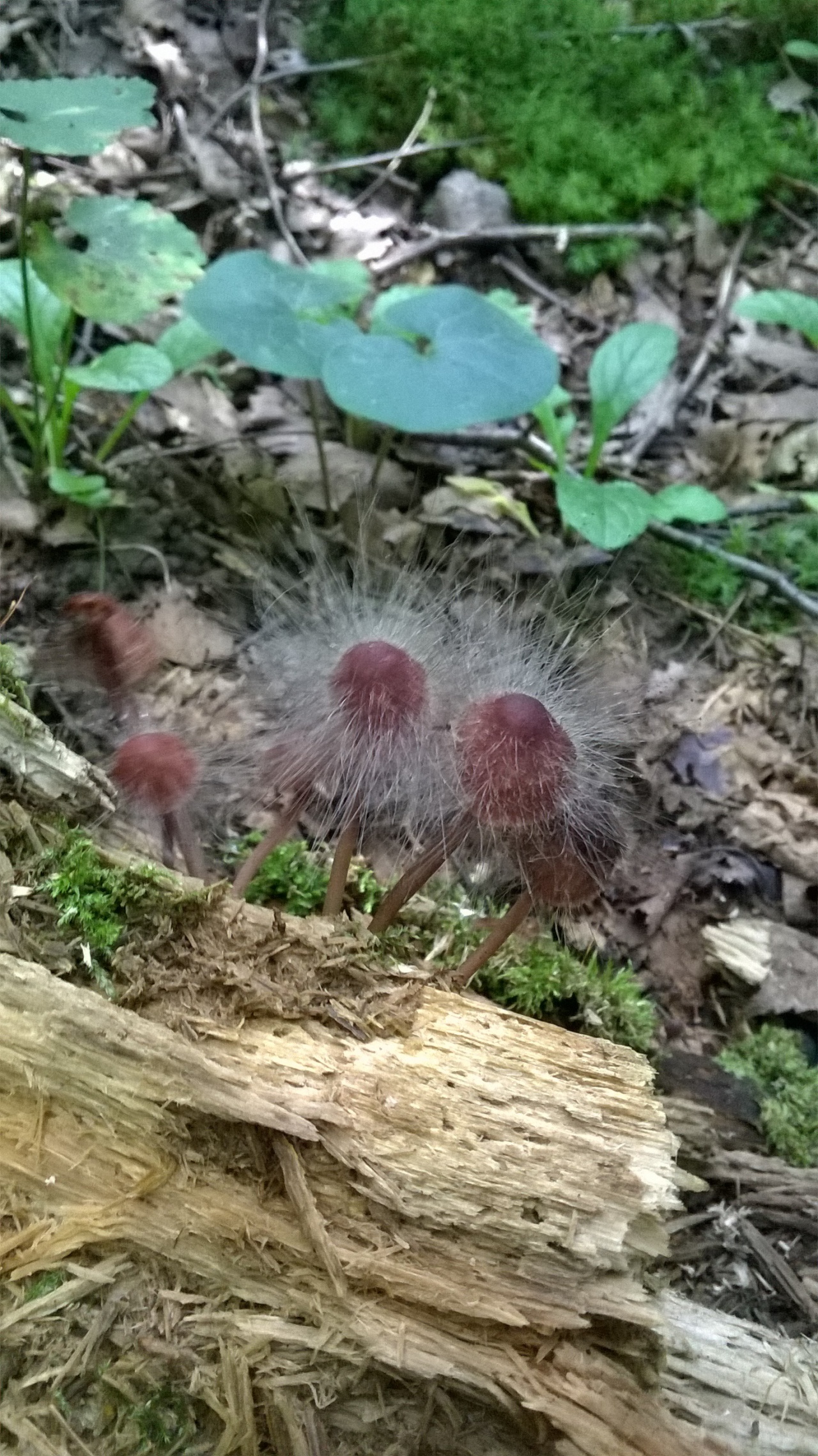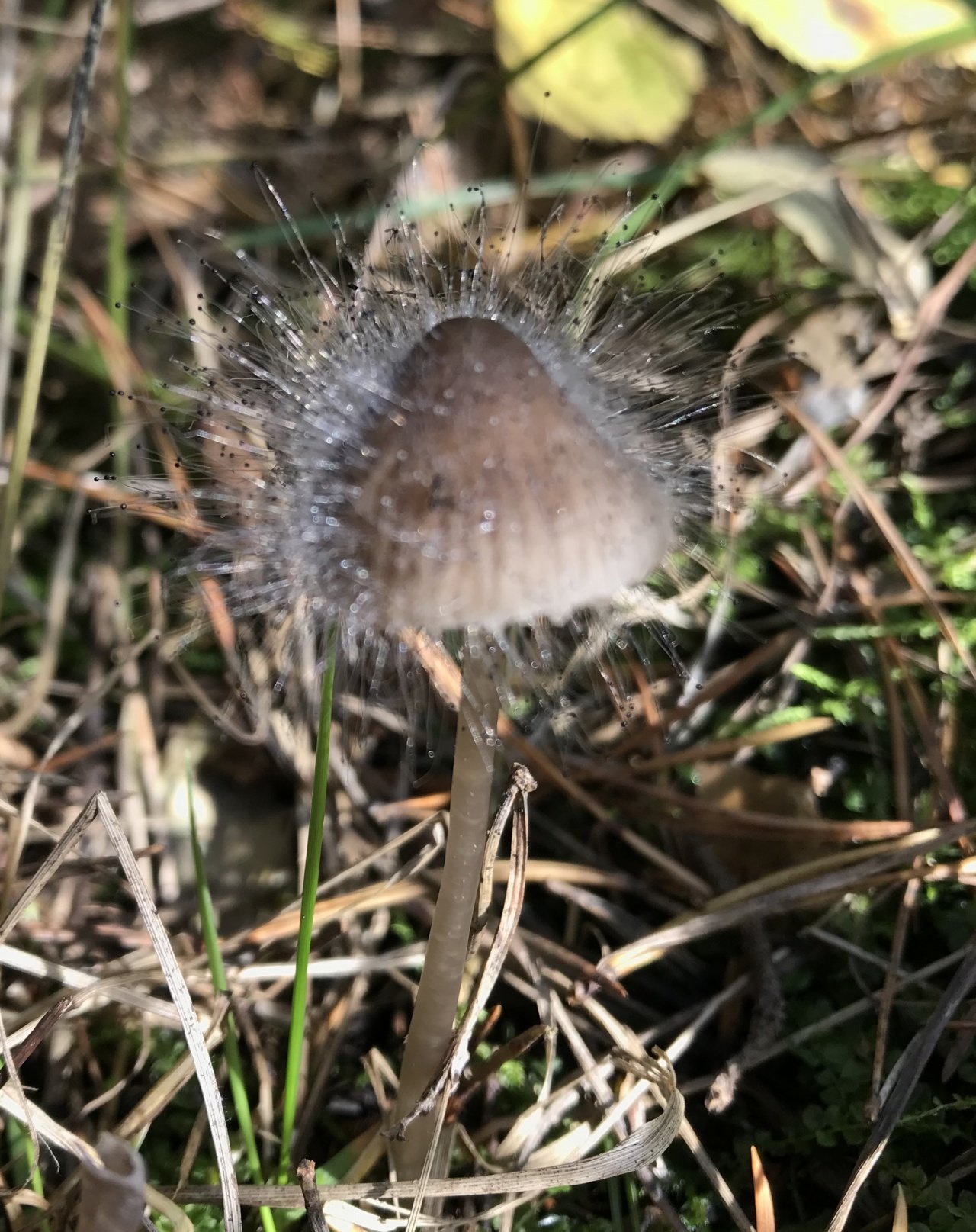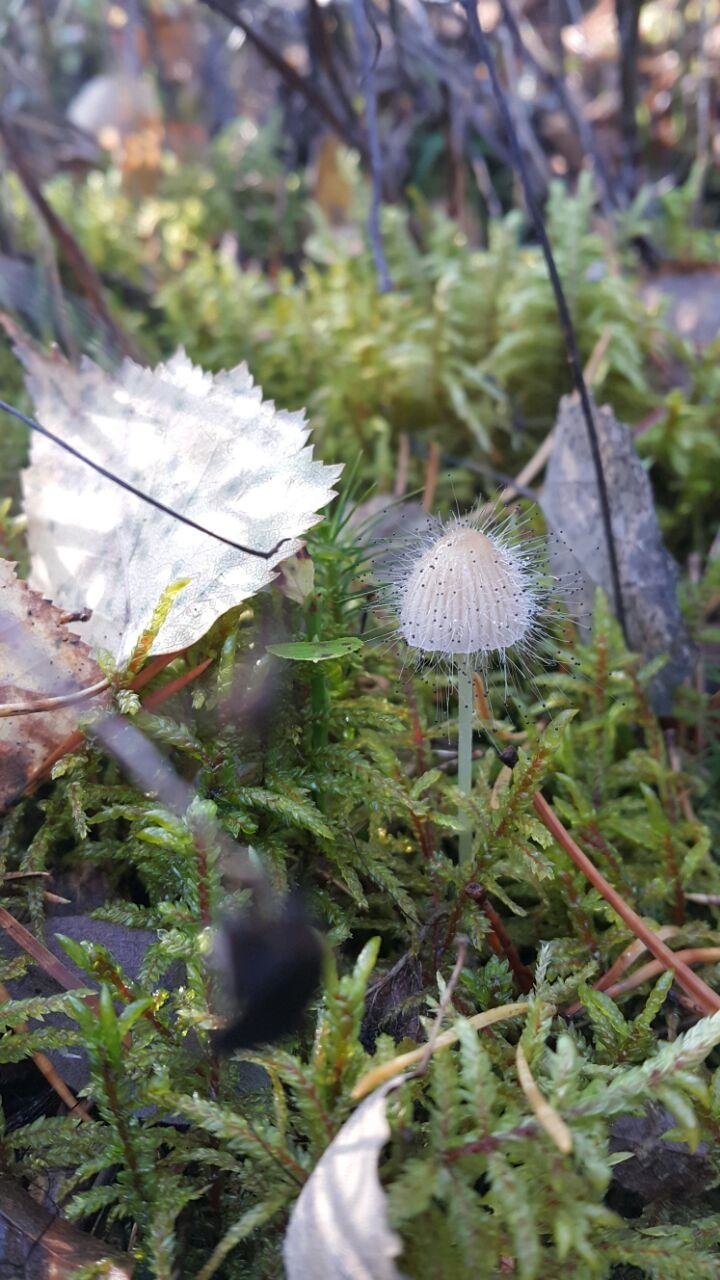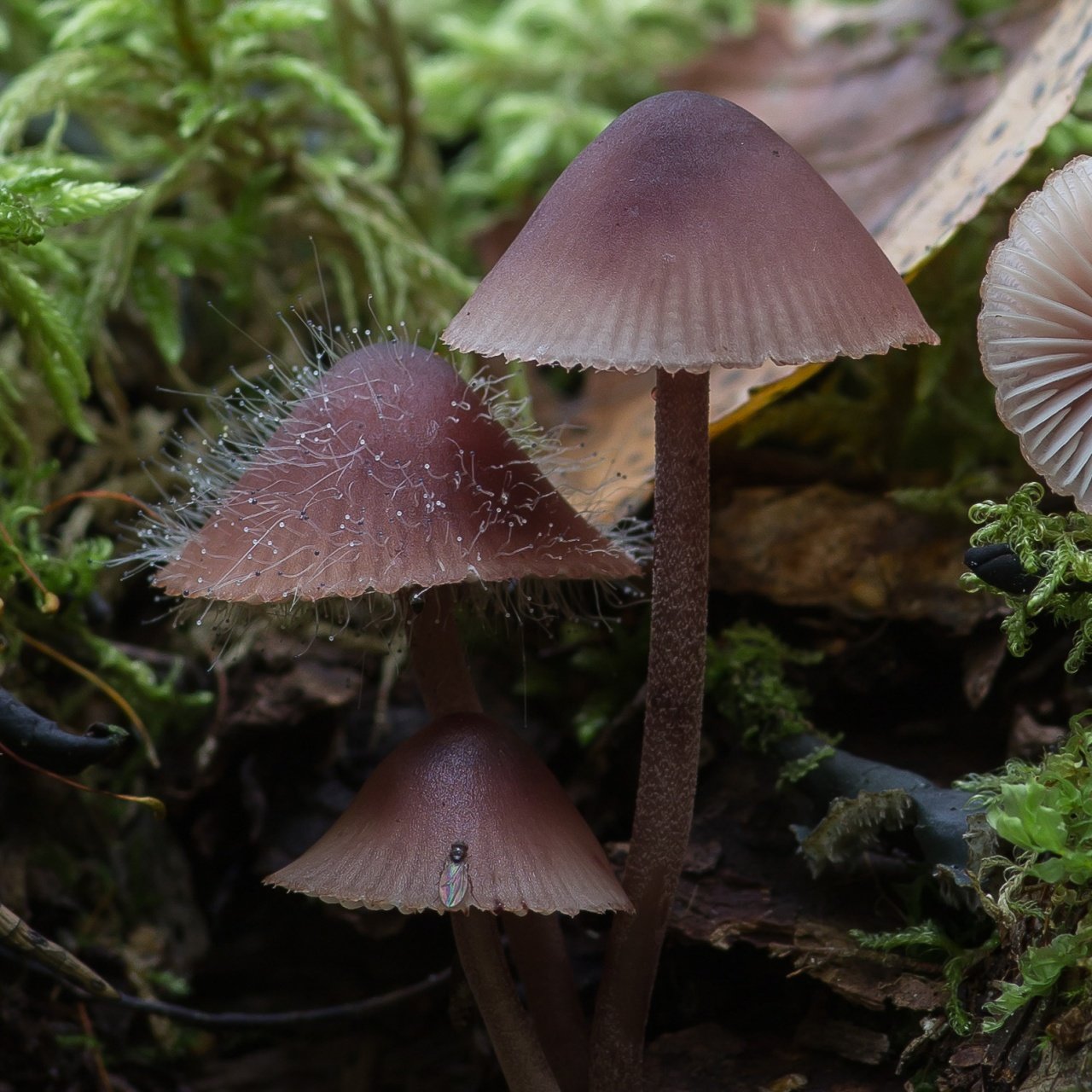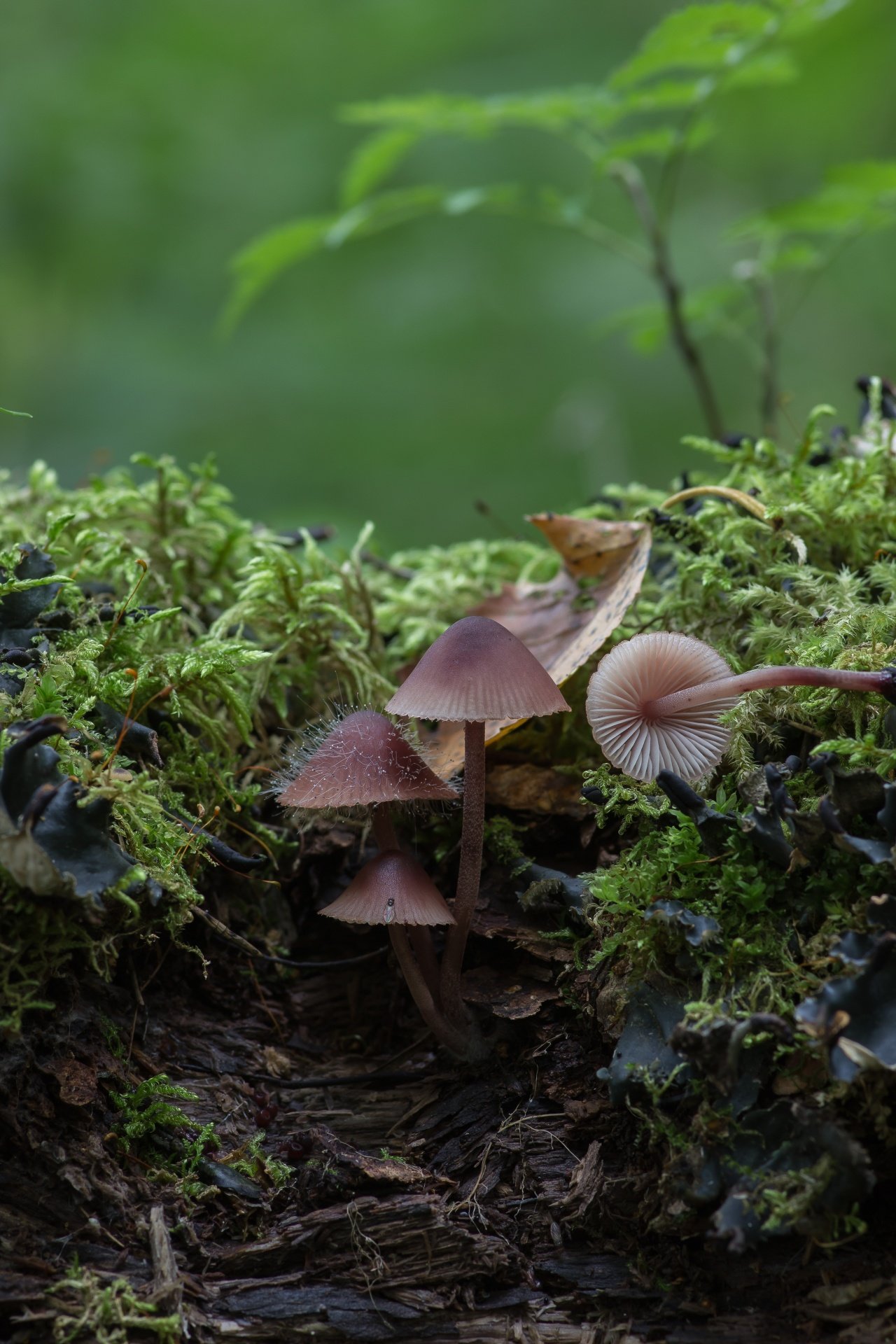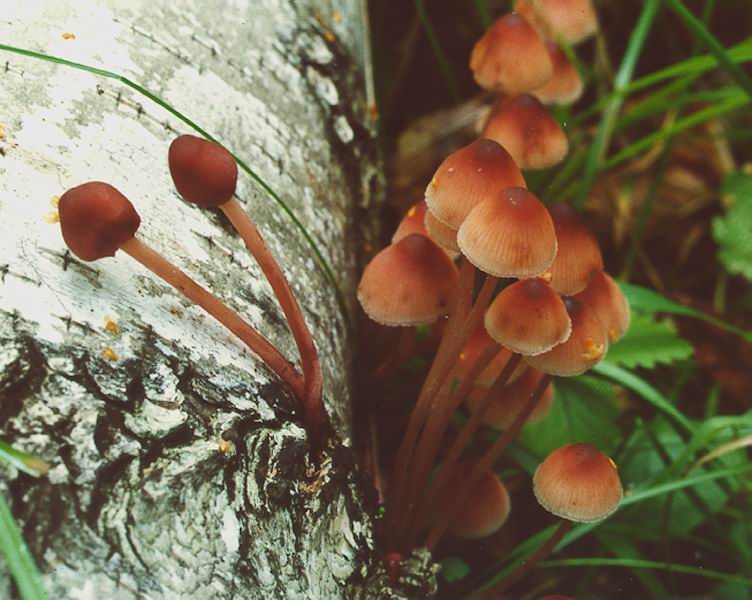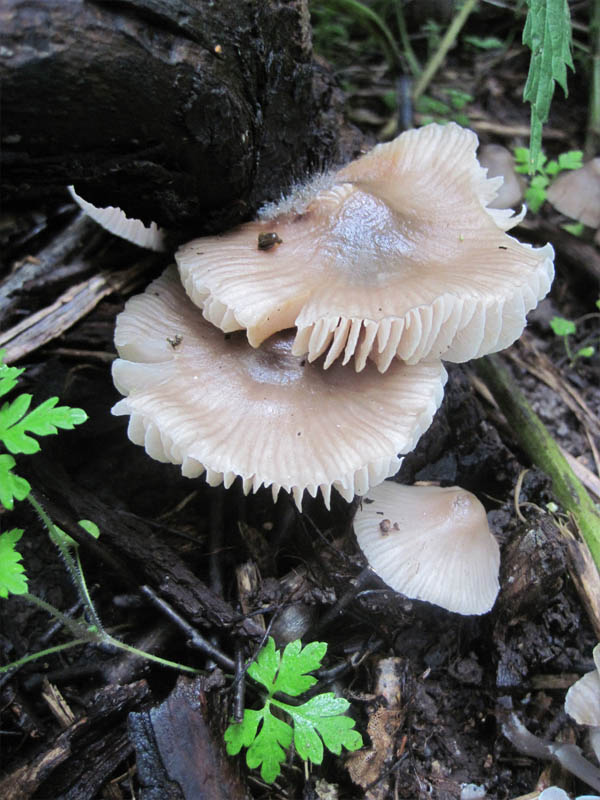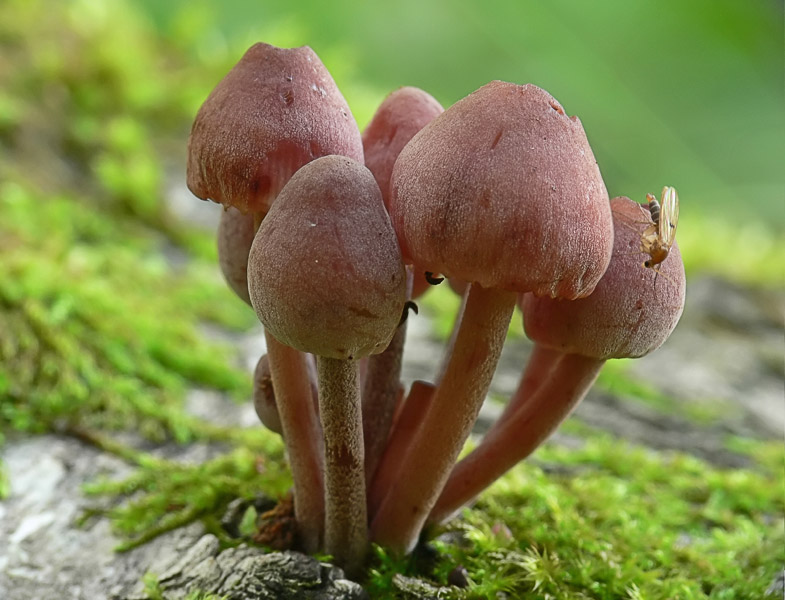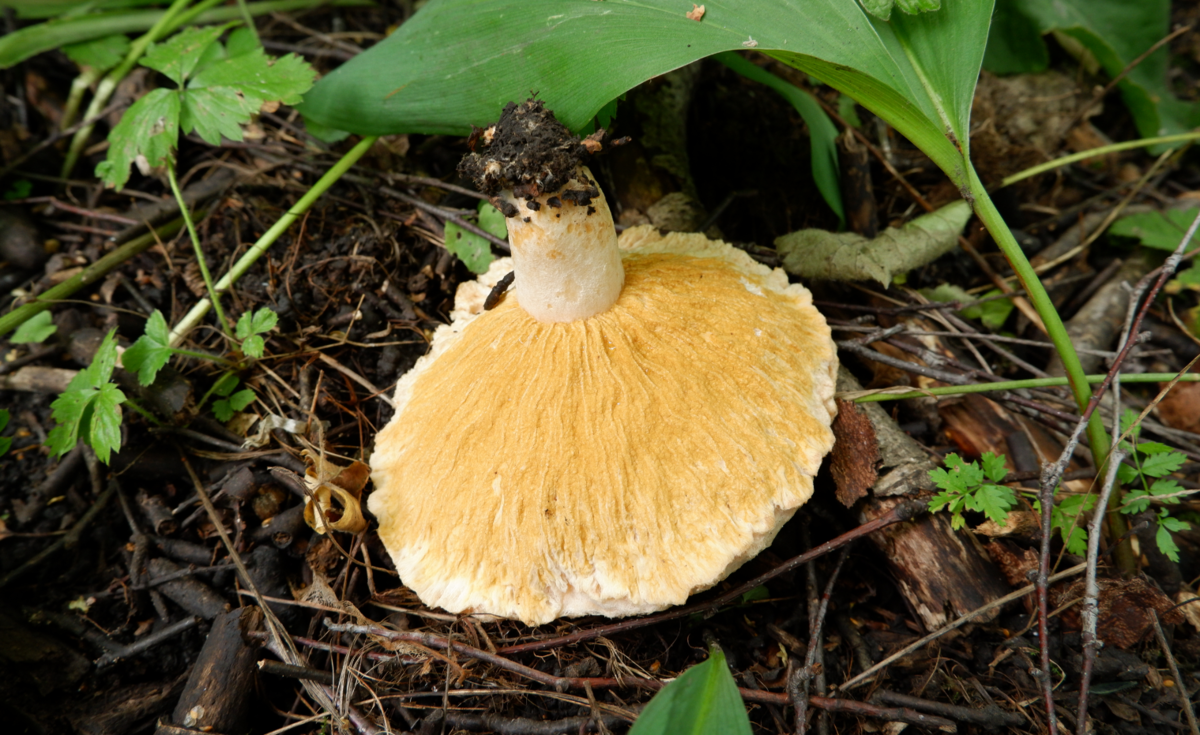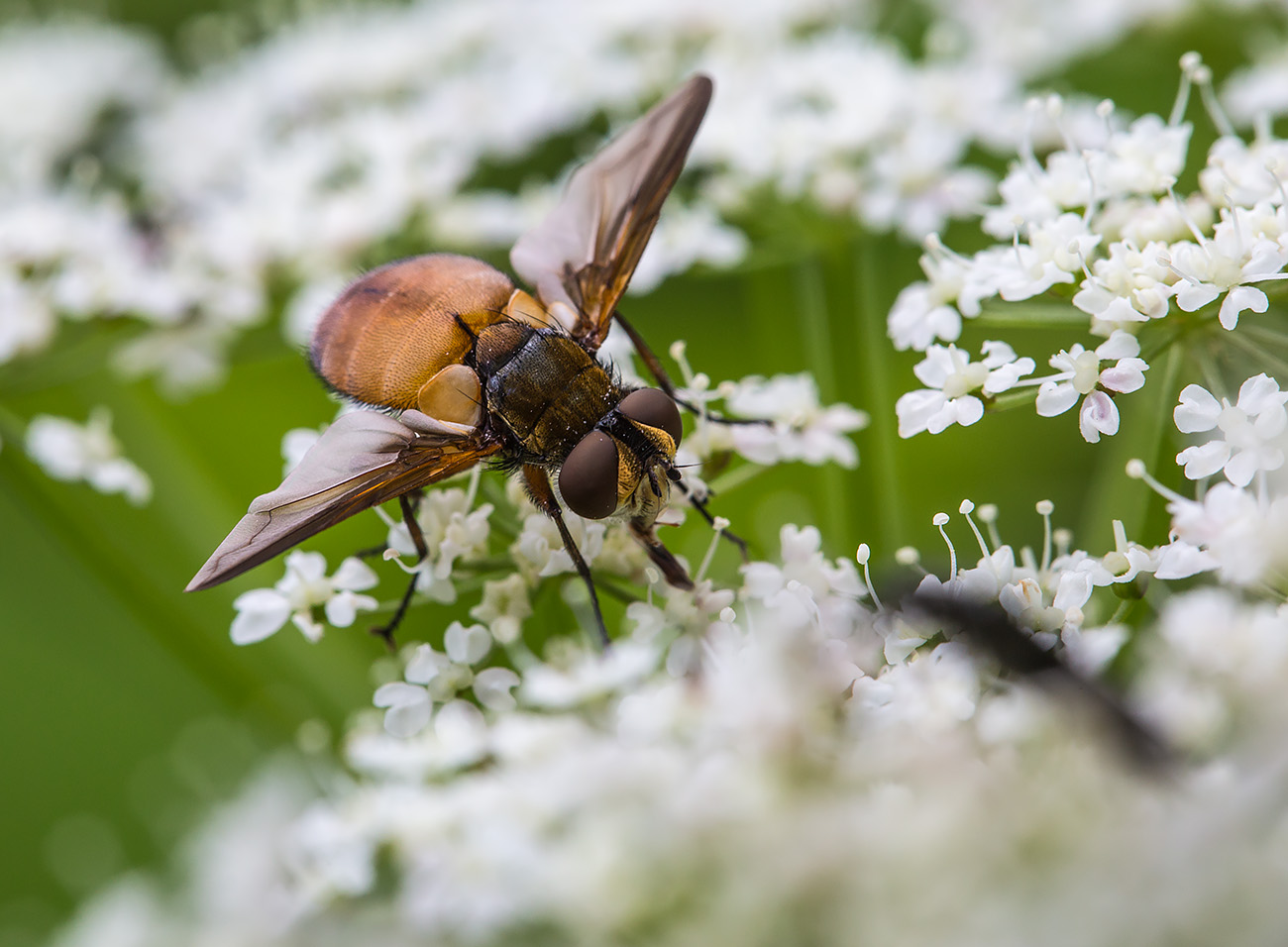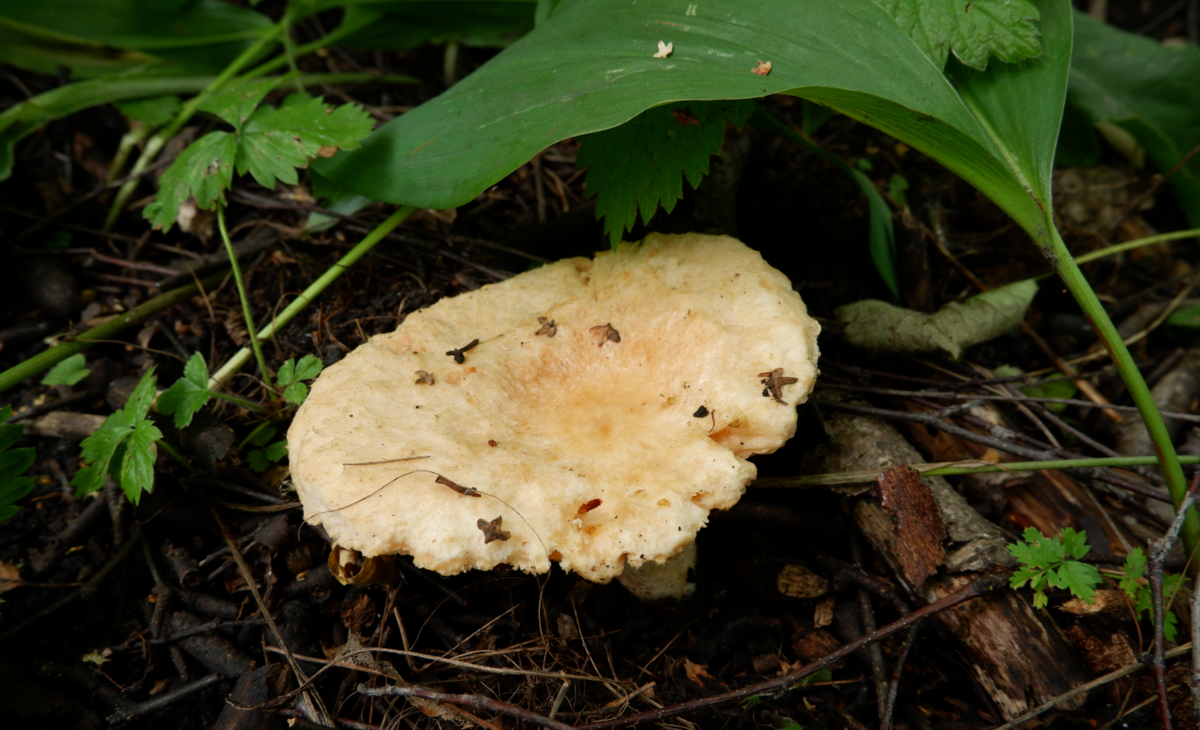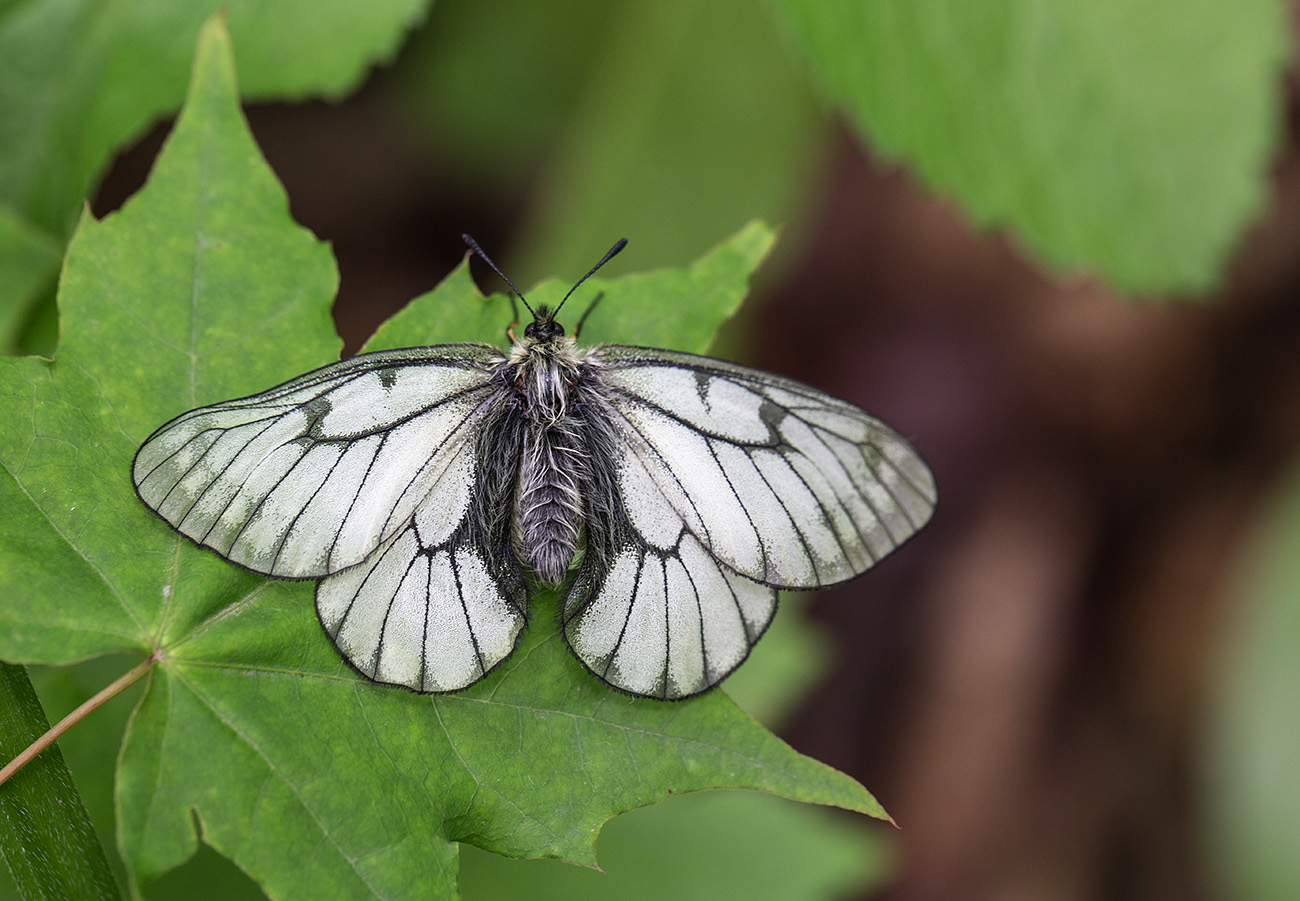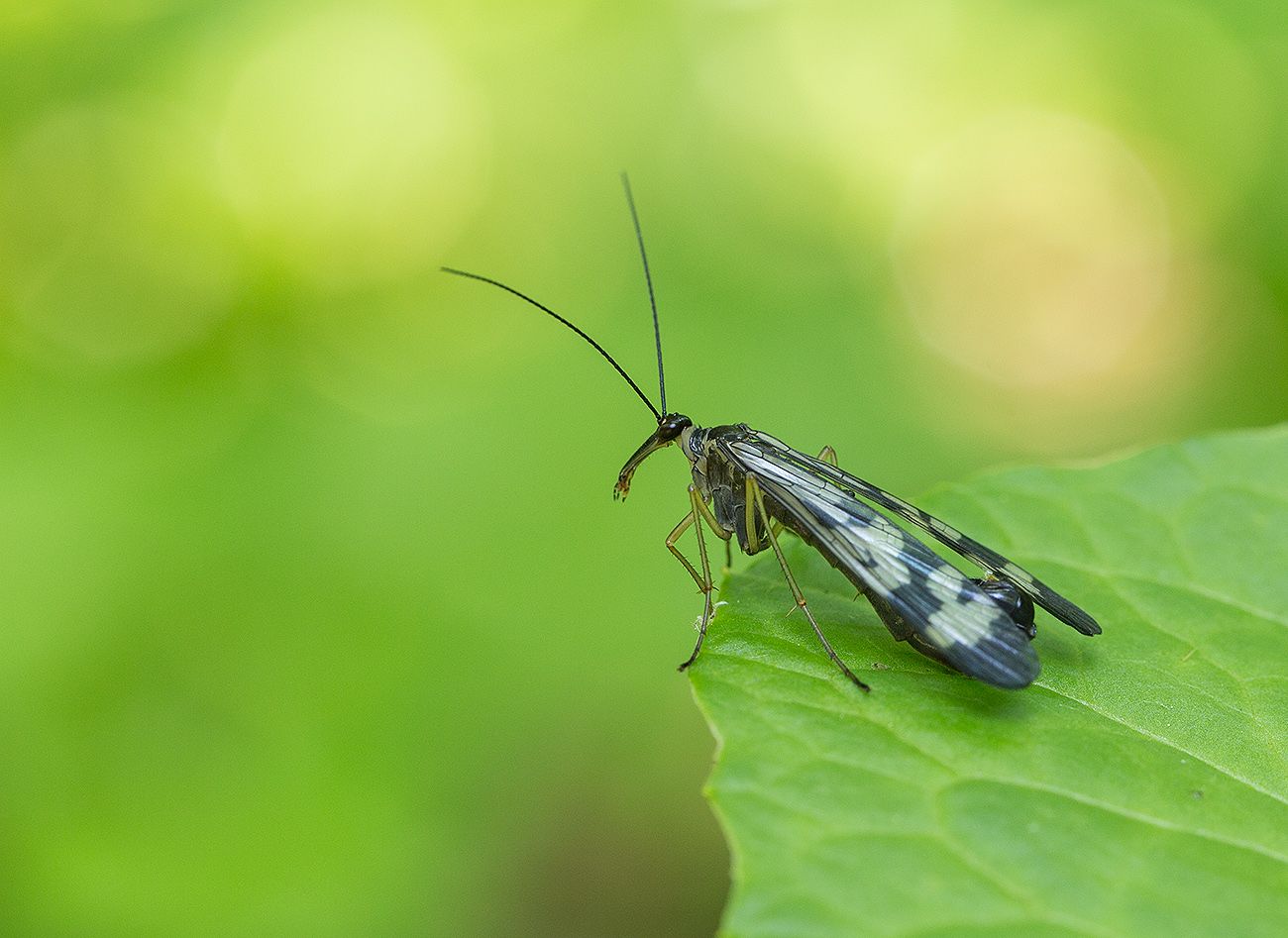Sebacina incrustans
Synonyms:
- Corticium incrustans
- Thelephora incrustans
- Thelephora incrvstans
- Clavaria laciniata
- Merisma cristatum
- Merisma serratum
- Thelephora sebacea
- Corticium deglubens
- Irpex hypogaeus
- Irpex hypogeus Fuckel
- Thelephora gelatinosa
- Dacrymyces albus
- Clavaria rivalis
- Sebacina bresadolae

Description
The fungus forms mycorrhiza with all types of plants and plant debris (herbs, twigs, leaves). It can crawl to the ground, litter, or even climb the stems of shrubs and trees.
Fruit bodies are rezupinatny (spread over the substrate), as they develop, they acquire a certain coral-like shape, although the word "coral" is somewhat incorrect: the form of sebacin encrusted in an adult state is very diverse. Irregular branch-like processes can be pointed at the ends, fan-shaped or resemble a fringe.
The surface of these "branches" is matte, smooth, without scales or hairs, wavy or with small tubercles.
The sizes of fruit bodies: 5-15, up to 20 centimeters.
Color: white, whitish, white-yellow, not bright. With age, dull yellow, light beige, maybe with a pinkish tinge, especially at the edges of the "twigs".
Pulp: cartilaginous, waxy-cartilaginous, gelatinous, rubbery-gelatinous. Various sources indicate different degrees of fragility and cartilage, from gelatinous-waxy to cartilaginous consistency. Perhaps this is due to the age of the fungus, or it may depend on the substrate.
Taste and smell: not pronounced, without a special taste and smell. Sometimes the taste is described as "watery" and "sour".
Spore powder: white Spores: transparent, smooth, hyaline, broadly ellipsoid, 14-18 x 9-10μm
Season and distribution
Cosmopolitan. Widely distributed throughout the world, in North and South America, Europe, Asia and Australia. Grows in forests of any type from June to September. There is information that S. incrustans is found in some European countries with warm climates in spring.
Similar species
Inlaid sebacina is one of the species of the genus Sebacina. Other species, which are few in number, about a dozen, form either completely rezupinata fruiting bodies (adjacent to the substrate without processes), or with “branches” that differ in shape or color.
Adult fruiting bodies S
incrustans can be mistaken for Telephoru, but you should pay attention to the tops of the branches, they are usually whitish in Telephors; the flesh of the telephora is more "leathery" than "gristly"; and, finally, telephors do not envelop the substrate, the twigs grow from a common base
Other information
During growth, sebacin encrusted often crawls onto living plants, envelops the trunks of young trees, shrubs and herbaceous plants, which can lead to the death of the plant.
Photo: Andrey and Andrey.
External description
The height of the fruiting body of yellowish Spathularia (Spathularia flavida) varies in the range of 30-70 mm, and the width is from 10 to 30 mm. In shape, this mushroom resembles an oar or spatula. Its pedicle expands in the upper part, becoming clavate. Its length can be 29-62 mm, and its diameter is up to 50 mm. The very leg of the yellowish pastularia can be either straight or sinuous, cylindrical in shape. The fruiting body often descends on both sides along a well-defined stalk. At the bottom, the surface of the leg is rough, and at the top it is smooth. In color, the fruit body is both pale yellow and deep yellow. There are specimens with a honey-yellow, yellow-orange, golden color.
The mushroom pulp is fleshy, juicy, tender, more dense in the area of the leg. Mushroom spatula (Spathularia flavida) Mushroom spatula has a pleasant and light mushroom smell.
Single-celled needle spores are 35-43 * 10-12 microns in size. They are located in 8-piece club-shaped bags. The color of the spore powder is white.


